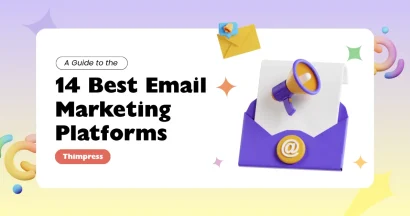A picture is worth a thousand words. This idiom applies perfectly to most scenarios in life, including social media. The right type of pictures can earn you not only shares and retweets but also an identity for your brand. The only thing is that finding such pictures is not an easy task. Sometimes you just can’t find the right picture for your posts. Or in other cases, you may want to create a brand identity with your pictures. In both these cases, someone will have to fire Photoshop on his/her computer and create useful images for you. Whether you do it yourself or hire any graphics designer to do it for you is another thing. If you’re an SMB, there’s a good chance that you’d like to do it yourself.
So don’t worry – we’ve got you covered. In this article, you’ll learn some easy hacks that will help you in creating social media graphics that will spark people’s interest and urge them to share. Let’s get started!
Tips for Design Social Media Graphics
Hack #1: Avoid Too Much Text
There’s already plenty of place for text in update boxes. Why pack it into an image then? The idea of a picture is to let the visuals (i.e. personalities, shapes, colors, textures etc.) do their talking. Therefore, you should avoid stuffing them with text. When it’s an absolute must, you should place text in some empty (read: plain) part of the image – not in any part that contains plenty of details.
Hack #2: Use High Quality Stock Photos
I know, I know. These images cost money. Fortunately, those days are nearing an end. Nowadays there’re many websites offering royalty-free high quality stock photos for as little as $1. Heck, some of these are also offering them for free. Examples include SplitShire, Unsplash, Pexels and Life of Pix. The days of expensive stock photography are gone.
Poor quality images not only fail in attracting shares and tweets but also damage your brand’s reputation. On the other hand, good quality images taken from any other website without their permission may put you in some serious legal troubles. So your best bet will be to use high quality stock photos from the websites mentioned above to create graphics for your social media posts. They’re designed to attract eyeballs, so they’re bound to earn you some extra attention when used on social media.
Hack #3. Have Some Variety
Images are undoubtedly one of the most shared content types on social media, but even among them you can’t keep feeding your audience with similar things repeatedly. So you should bring some variety in the types of visual content that you share. For example:
- Quotes: Though this type of graphics go against the first hack mentioned in our list, please keep in mind that these’re just hacks to help you design graphics easily; not strict rules that must be followed. If sometimes you can convey the meaning in a solid way by combining visuals with some text, you should do it. Graphics having short but meaningful quotes can go a long way in creating an image for your brand, so you should give it a try.
- Infographics: Storytelling has always been one of the key things that marketers try to do, and infographics can help a lot in doing that. You can share parts of your popular infographics on social media pages to keep variety in your visual content while continuing the flow of high-quality, information rich content.
- Screenshots: These’re actually very special. You can use a screenshot for variety of things – you can answer FAQs through them (please answer only 1 question in each), you can give a sneak peak of your upcoming products or something you’re working on, etc. The options here are many, and there’s a good chance that if you use them wisely then users will hit the share button again and again.
Please note that types given above are just some suggestions. You should select your desired visual content types depending on the nature of your business. If needed, you should also create new forms of visual content whenever possible.
Hack #4. Visual Trends Can Take You a Long Way
Just like anything else, visuals have also got their own trends, which keep coming and going. If you want to create stunning visual content that’s also in-line with the latest trends, do some Pinterest research. Pinterest is great for identifying visual trends because it’s primarily a visual medium. And it’s also not like Instagram where people keep posting their selfies. So it’s perfect for identifying popular visual trends.
Another benefit of using Pinterest to identify trends is that you can immediately see which trends are working and which ones are not by the number of pins. More pins obviously mean more interest in the trend.
So search a few terms related to your post in Pinterest and observe the pins carefully. What type of pins have been repinned the most, what type of fonts have been used in them, whether backgrounds in them are dark or light and so on. Keep looking for similarities to identify trends that work.
But remember – you should NEVER copy the images from Pinterest for your social media posts. You’re doing research and you should just look for common elements that exist in all highly pinned images. Just taking images from Pinterest and posting to your social media pages won’t help you much.
Hack #5 – Brand ‘Em All
Lastly, if you’ve got a brand identity, embed it in your graphics as well. Colors, fonts, tone of text used (if any)… all should be in-line with your brand identity. It’ll be much better if you can get these things done by a designer. They can often provide you easily customizable Photoshop templates to create social media graphics that’ll be in-line with your brand identity.
Conclusion
Always remember, great graphics don’t involve complicated elements because their job is make the meaning more simpler. That’s the main purpose of visuals – they can explain things in much simpler ways than text. Even the greatest professional designers avoid complexity in their graphics. So you too should avoid making them complicated. Just apply the simple hacks given above and you’ll be good. No need to complicate the things.
Read More: Digital Marketing – Is Your Marketing Ready For The Digital Future?


